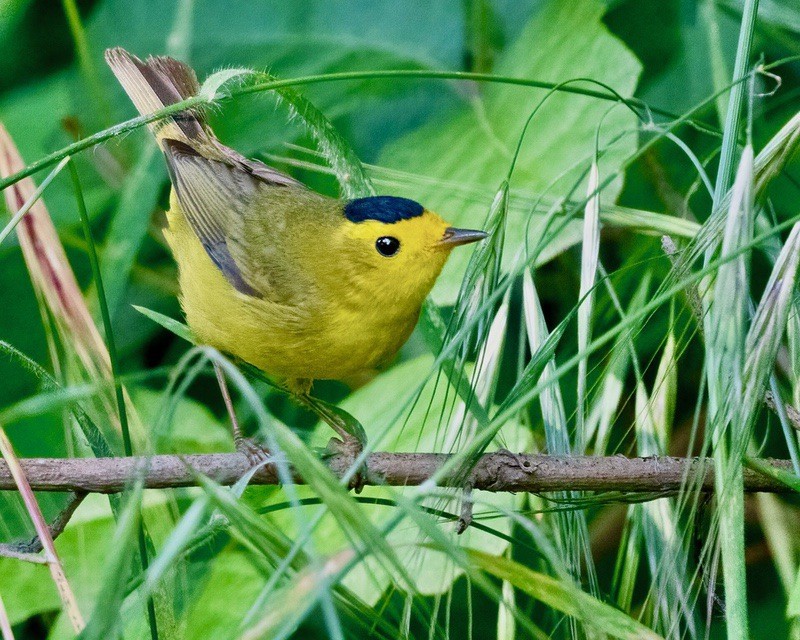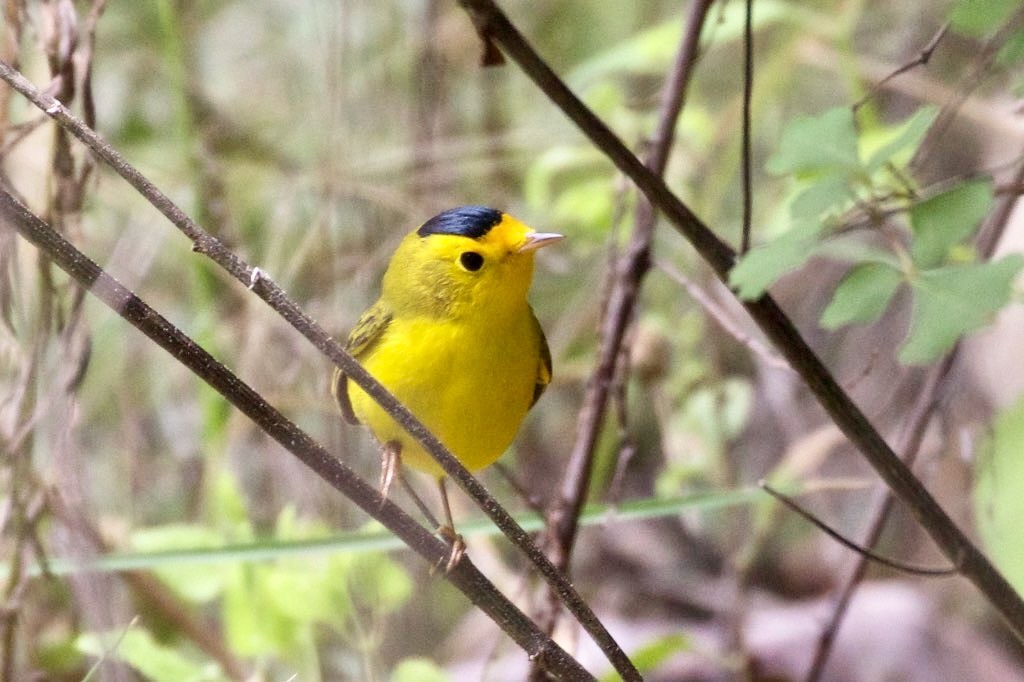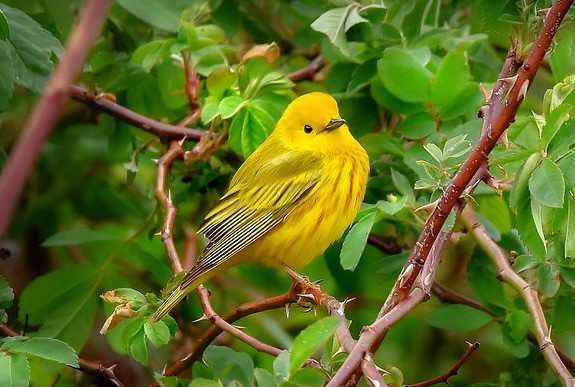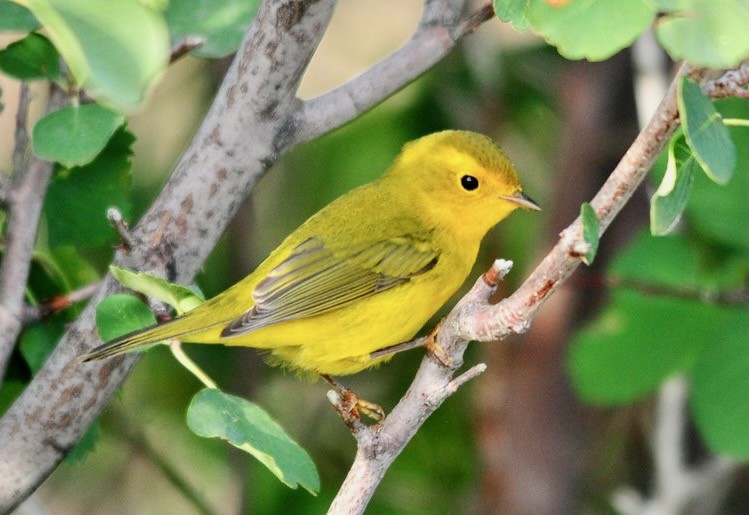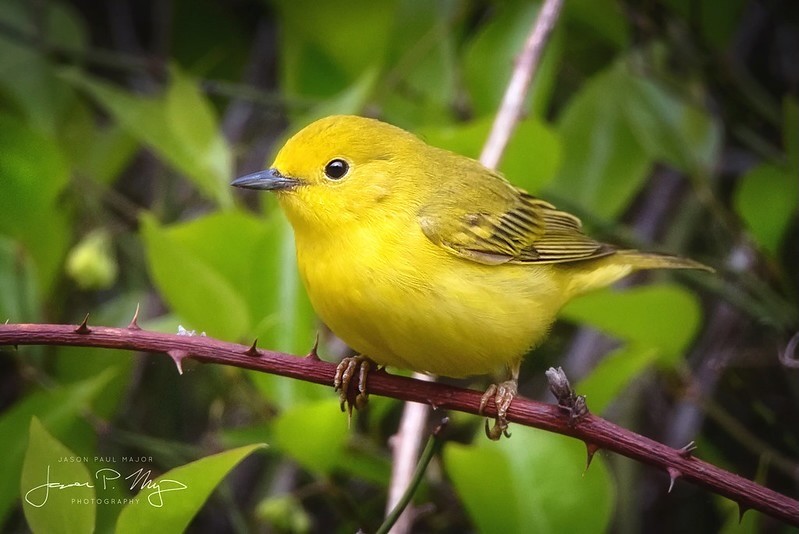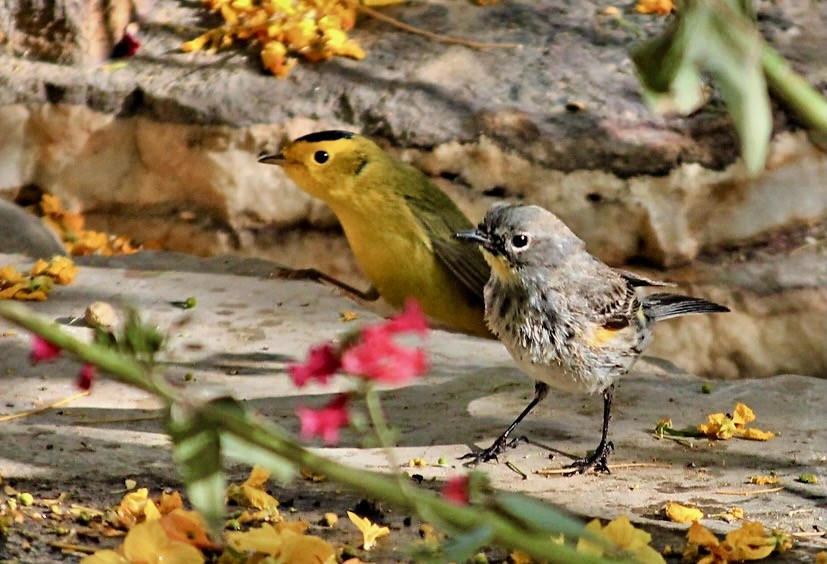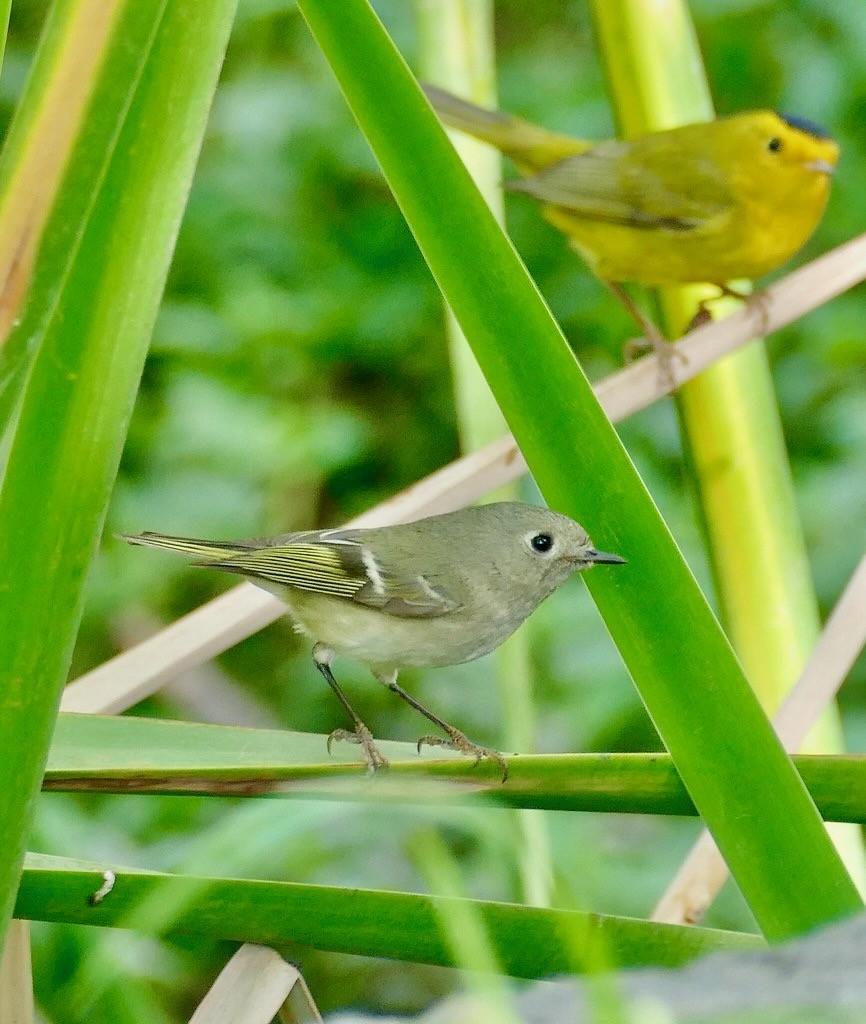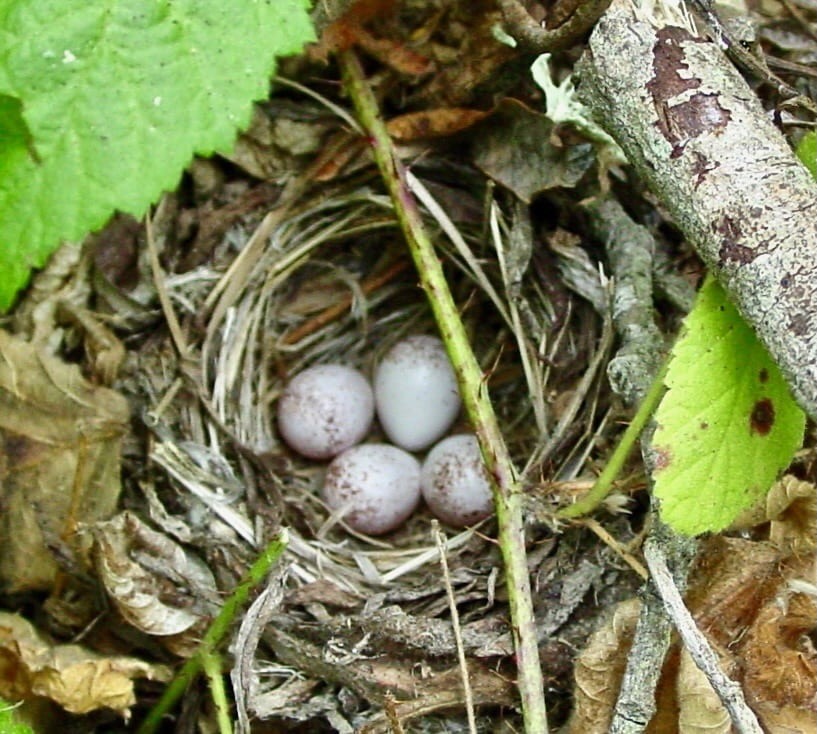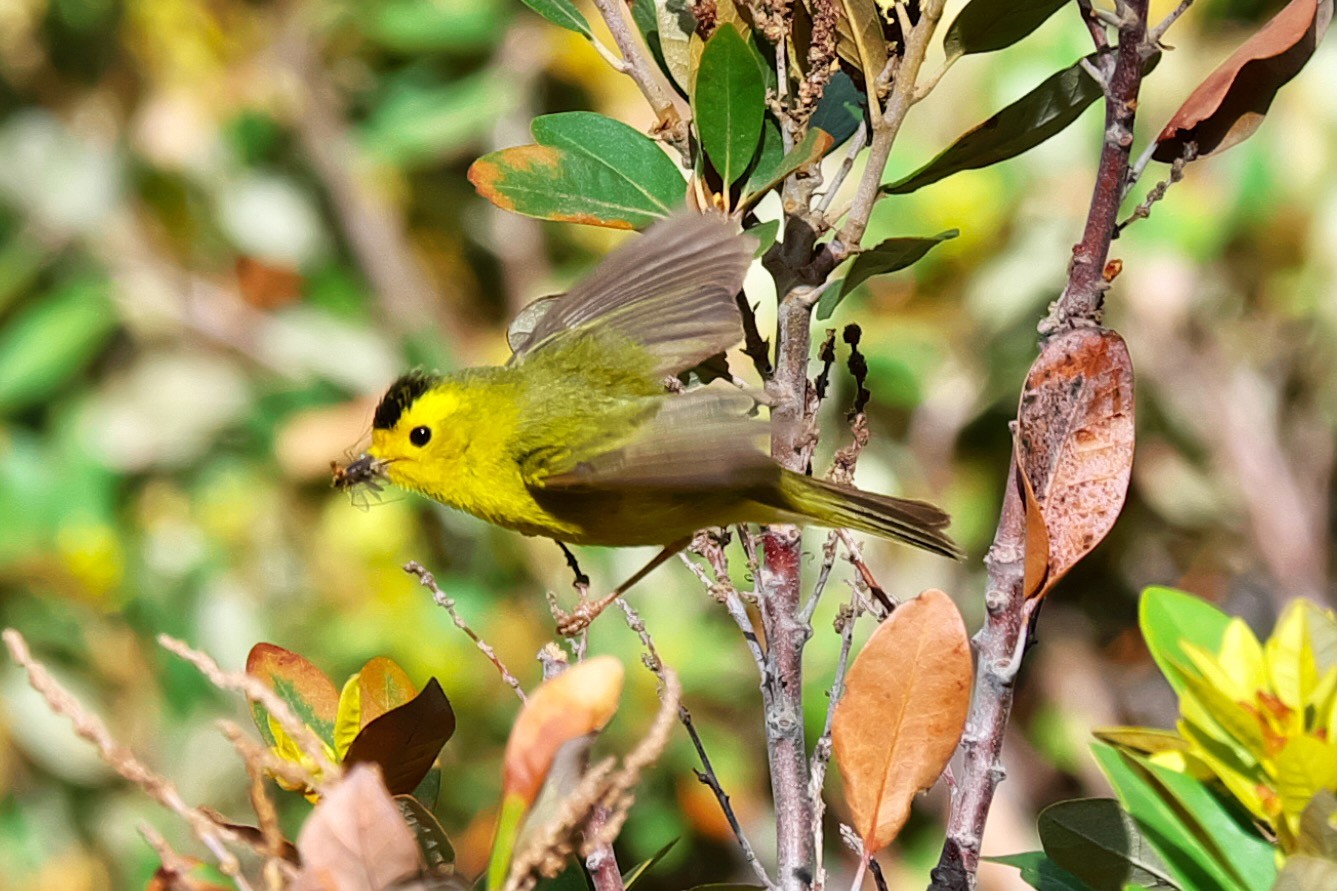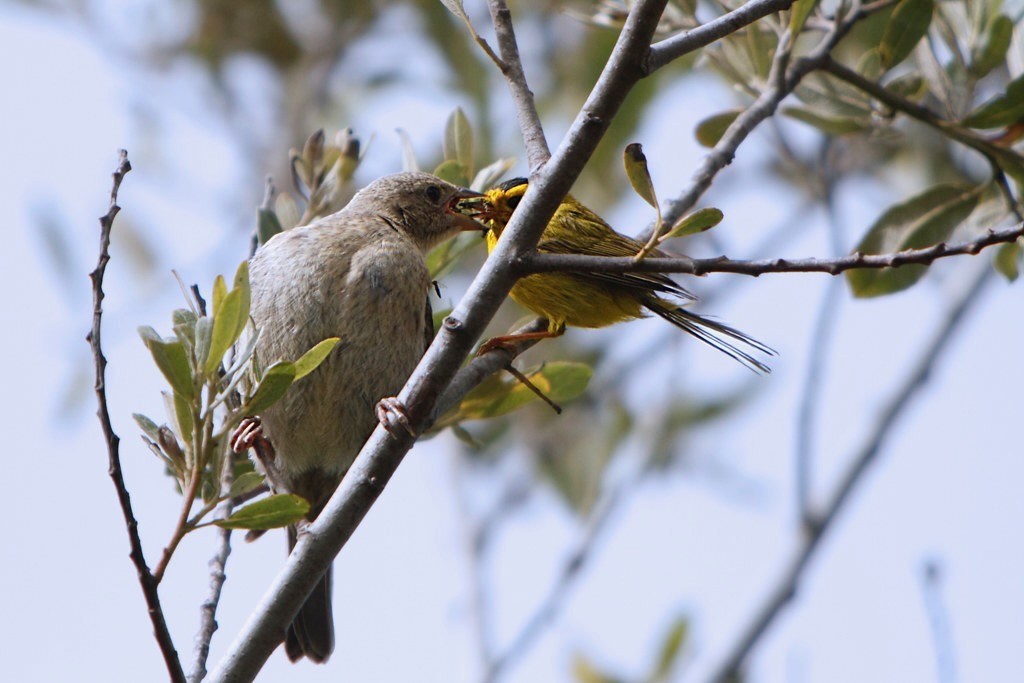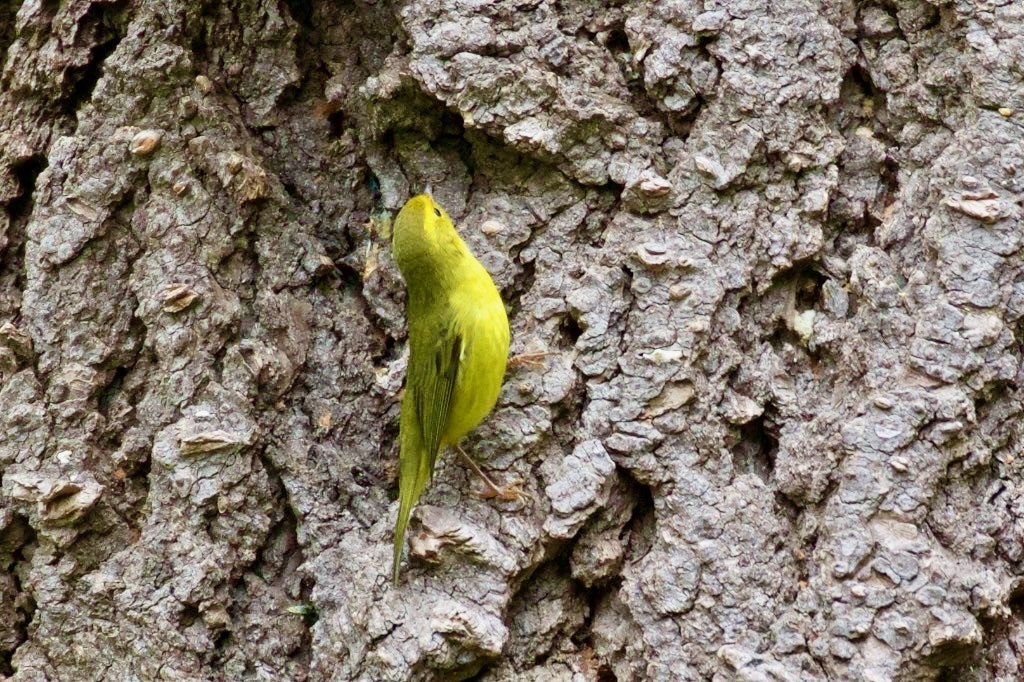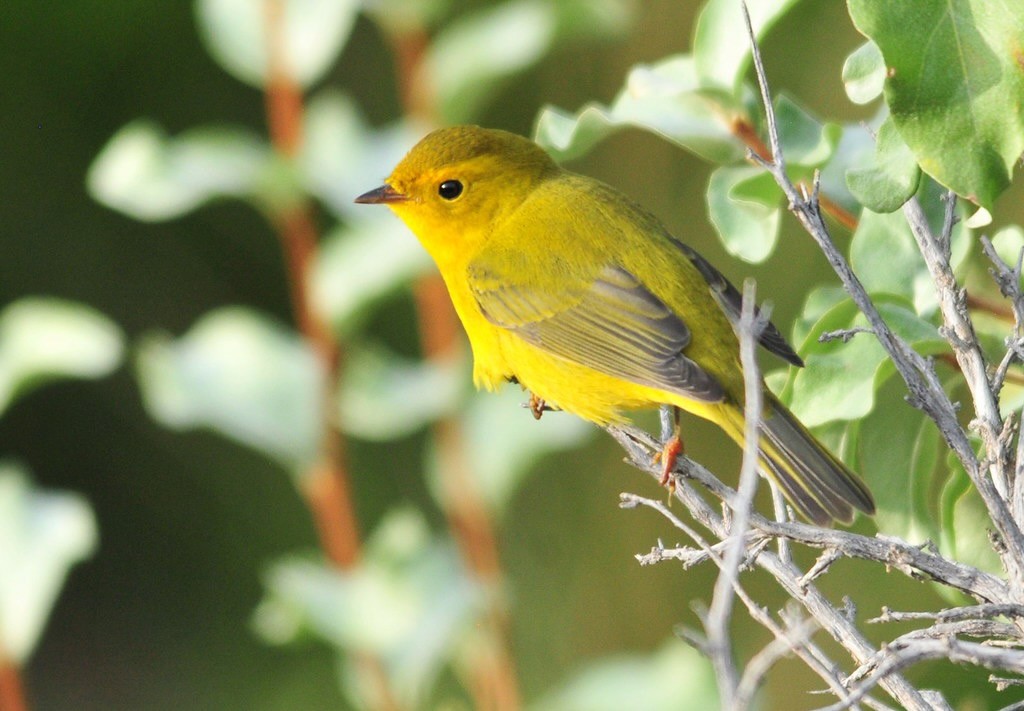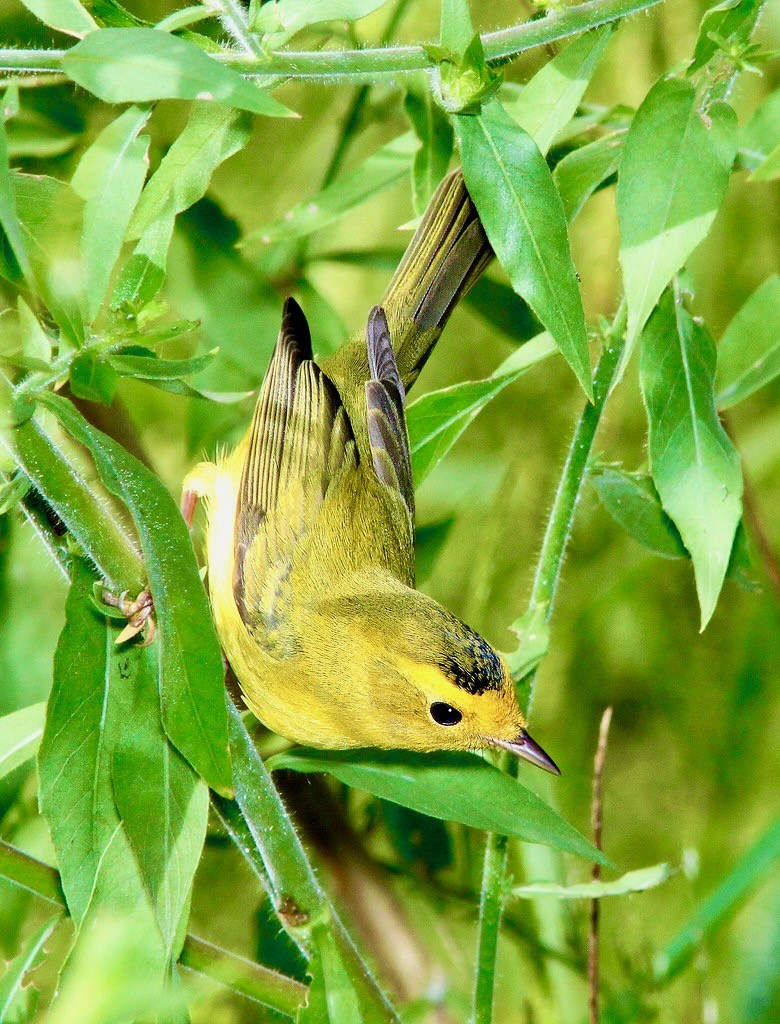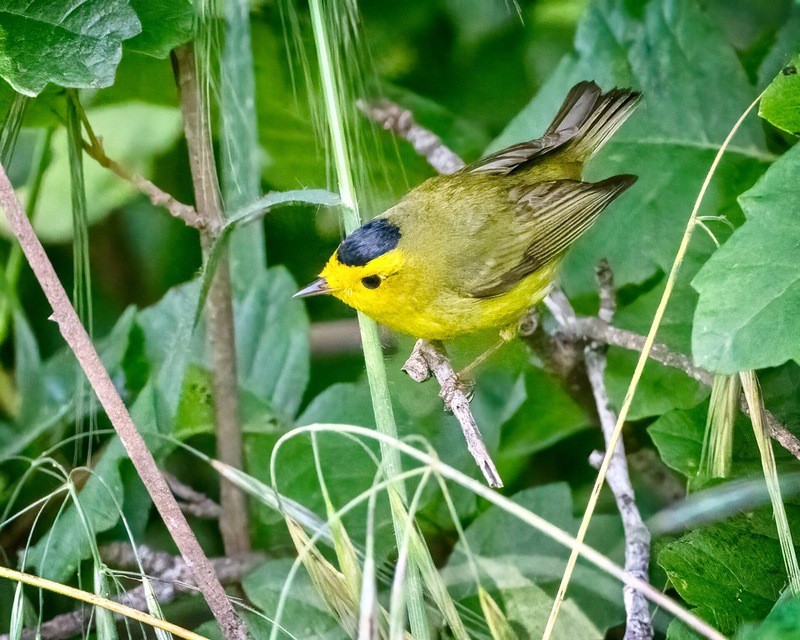Wilson's Warbler
Bird data for Salter Grove started in 2002, but the Wilson's Warbler was only recorded for the first time at Salter Grove in May 2024. A small yellow bird flitting actively high up in canopy foliage near Upland Trail marker U4 was first thought to be a Yellow Warbler, a slightly larger species that comes to breed in the park every year. However, the black cap that soon came into view and the song heard positively identified it to be a male Wilson's Warbler.
This woodland warbler winters throughout Mexico and much of Central America and migrates through all 48 states to breed across northern North America, namely the southern half of Canada and Alaska, the northern Pacific coast, and the western mountains of the United States.
It preferentially nests near the ground in willow and alder thickets near water, and edges of woodland with dense ground vegetation. Unfortunately, avoiding the forest interior means it is also more vulnerable to brood parasitism by the Brown-headed Cowbird, which hunts for nests along edge habitats to deposit eggs for other bird species to foster.
DNA studies have established that Wilson's Warbler consists of three subspecies, each with geographically distinct breeding and wintering grounds. Although overall, there has been little change in the extent of its breeding habitat, the coastal subspecies that breeds from southwestern Canada south to northern California has seen a sharp decline in numbers in the 21st century. It winters in the Baja Peninsula of Mexico where extensive areas of forested habitats have been converted to luxury resorts and housing to meet the demands of tourism.
Wilson's Warbler was reported as an uncommon migrant in Rhode Island in the late 1800's and continues to be an uncommon but regular migrant in the state.
For more information:
https://www.allaboutbirds.org/guide/Wilsons_Warbler#
https://www.audubon.org/field-guide/bird/wilsons-warbler
https://en.wikipedia.org/wiki/Wilson's_warbler
https://animaldiversity.org/accounts/Wilsonia_pusilla/
Howe, Jr., R.H. and Sturtevant, E. (1899) The Birds of Rhode Island. p. 82

